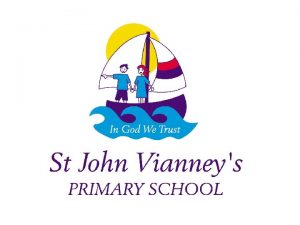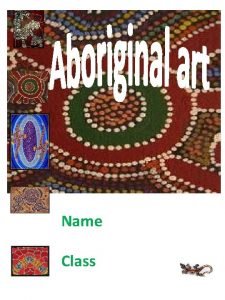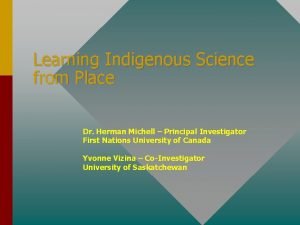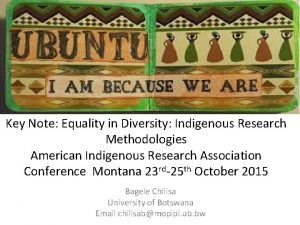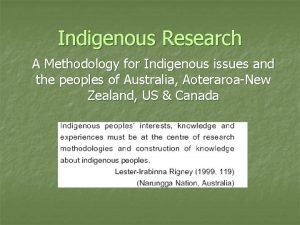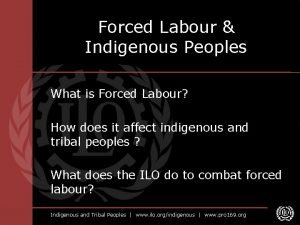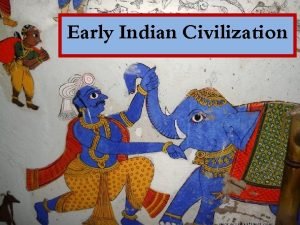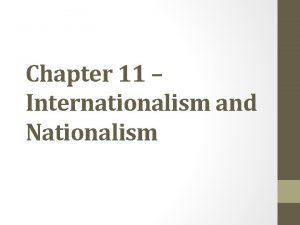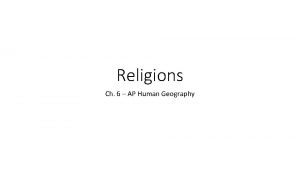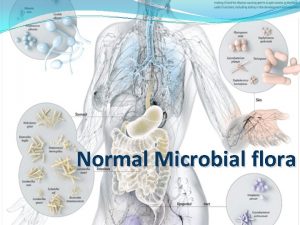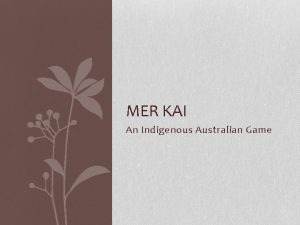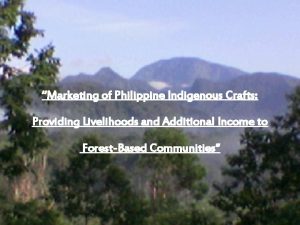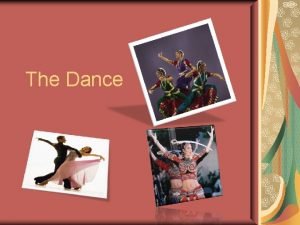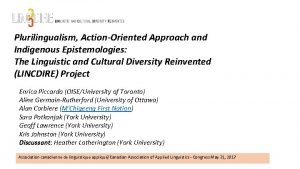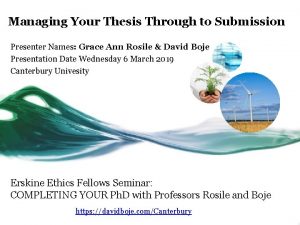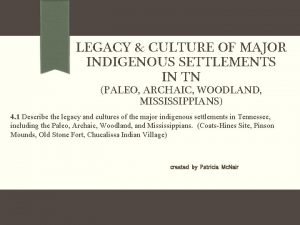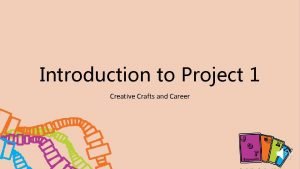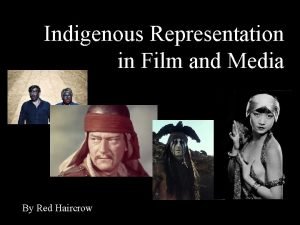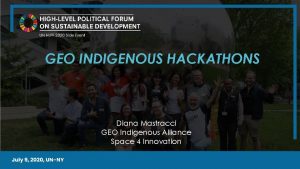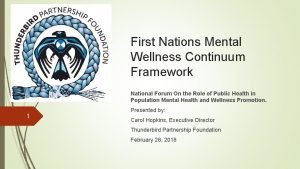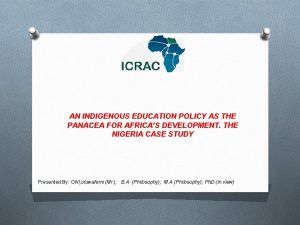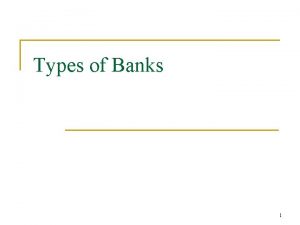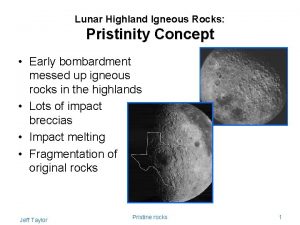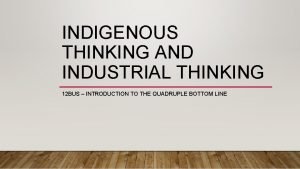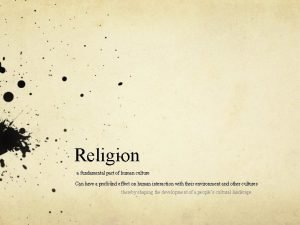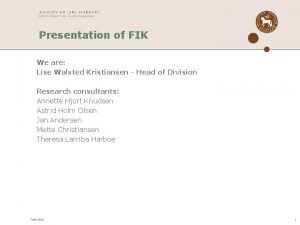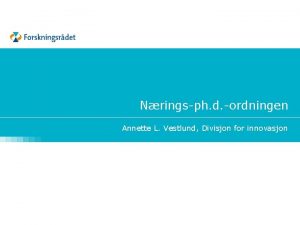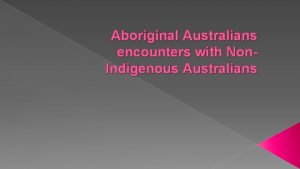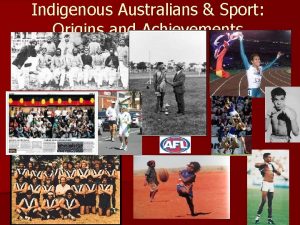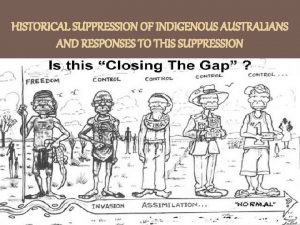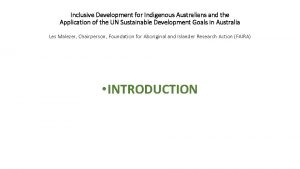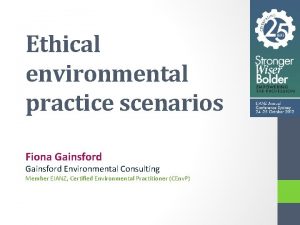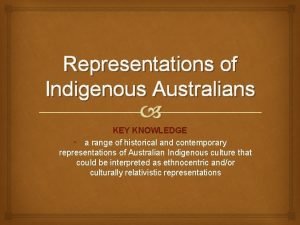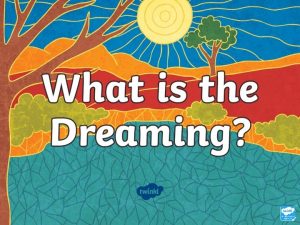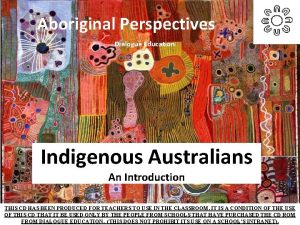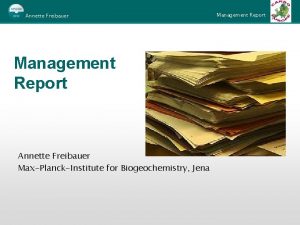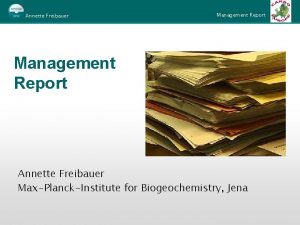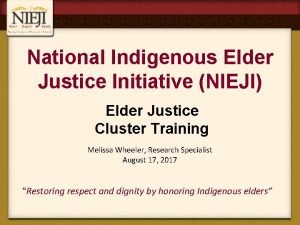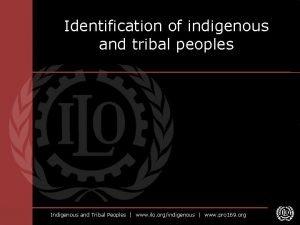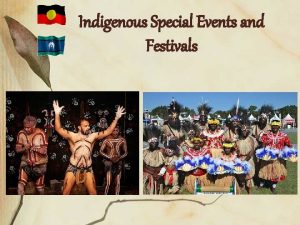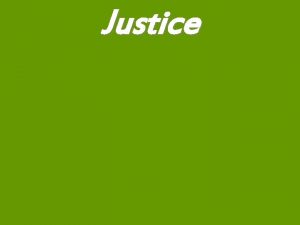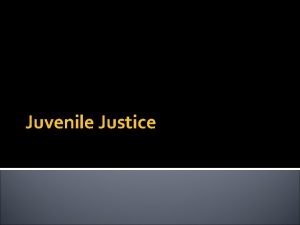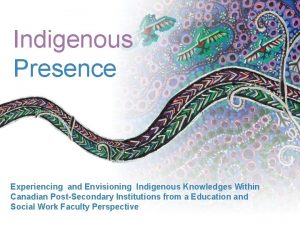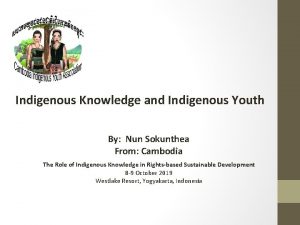Indigenous Australians and Justice Annette Gainsford and Associate

































- Slides: 33

Indigenous Australians and Justice Annette Gainsford and Associate Professor Alison Gerard

Learning Outcomes • Understand the pedagogical framework governing incorporation of Indigenous content into law curriculum – nationally and at CSU • History: • Demonstrate knowledge of Indigenous cultures including spirituality, kinship and law/lore • Understand the history of Government policies of colonisation including segregation, protection and assimilation and their impact on the relationship between Aboriginal and Torres Strait Islander people and the law • Understand the place of Indigenous customary law as a source of law • Apply knowledge of appropriate terminology and protocols • Understand Contemporary issues: over-representation, education, healthy, employment, self-determination, inter-generational trauma, land rights Understand the impact of legislation

Indigenous Content in Law Curriculum • Recommendations - Royal Commission of Inquiry into Aboriginal Deaths in Custody 1991 • Universities Australia • Charles Sturt University • YOUR Bachelor of Laws

‘Yindyamarra Winhanganha’ • ‘Yindyamarra Winhanganha’ is a Wiradyuri phrase meaning, ‘the wisdom of respectfully knowing how to live well in a world worth living in’. It’s a sentiment at the heart of CSU’s approach to education, and reflects the University’s ethos ‘for the public good’.

Personal Reflection • What is your own identity? What makes up your own identity?

Acknowledgement of Country Hello my name is Annette Gainsford and I would like to acknowledge the traditional custodians of this land the Wiradyuri people and pay my respect to elders past and present. May this land that they have walked for thousands of years humble us and may their spirits guide us in all we do.

Connection to Country and Culture • Connection with country is crucial to the wellbeing of Aboriginal and Torres Strait Islander peoples. • Culture represents the ways of living that are built up by groups and is transferred from one generation to another. • Aboriginal and Torres Strait Islander peoples are connected to country through lines of descent (paternal and maternal), as well as clan and language groups. • Surviving on this land for more than 60, 000 years, Aboriginal and Torres Strait Islanders established effective ways to use and sustain resources. One important aspect is the right of certain people to control the use of resources in a particular area. Aboriginal and Torres Strait Islander people don’t see themselves as ‘owning’ land, animals, plants or nature, but rather belonging with these things as equal parts of creation. • Deep cultural and spiritual values like totemism have also played an important part in Aboriginal and Torres Strait Islander resource management. Totemism is a belief and value system that connects human beings to other animals, plants and aspects of nature. Groups and individuals are assigned a particular animal that they are related to and have to care for. This gives them a profound sense of connection to and responsibility for the natural world.


Aboriginal Family Obligations and Kinship • Aboriginal family obligations reflect cultural values, involving kinship responsibilities. • For Aboriginal people kinship and family are especially important. Aboriginal people have family and kinship responsibilities that are not typical of non-Aboriginal families. • Aboriginal people get things done through working through their family and kinship structures. http: //www. workingwithatsi. info/content/PI_family. htm

Past History of Policies • • Aborigines Protection Act 1909 (NSW) - (1909 - 1969) Aborigines Protection Amending Act 1915 (NSW) Assimilation Policy (1940 s – 1960 s) The term the “Stolen Generations” is used for Aboriginal people forcefully taken away from their families between the 1890 s and 1970 s.

Impact of History The events of the past are very important to Aboriginal and Torres Strait Islander people. These events weren’t that long ago. There are many people alive today who: • • Were forcibly removed from their parents under government policy Had their children taken away Were not allowed in towns after 6: 00 pm at night Were not allowed to be in certain areas without permission Were barred from schools and hospitals Returned from wars only to find they did not have the same rights as non-Aboriginal people Have not enjoyed the same rights as others, simply because they are Aboriginal There are people still alive today who witnessed killings and poisonings as young children. This affected those people deeply.

The Relationship Between: • Education • Health • Employment • Housing • Incarceration The social disadvantages Indigenous people experience in relation to housing, education, income and employment have contributed to the differences in health outcomes between Indigenous and non-Indigenous Australians. http: //www. aihw. gov. au/australias-health/2014/indigenous-health/

Aboriginal Education • Almost half (49%) of Year 7/8 Indigenous students stayed at school until Year 12 in 2011, compared with 81% of non-Indigenous students. However, there has been a significant rise in retention rates for Indigenous students from Year 7/8 to Years 10, 11 and 12 between 1998 and 2011 • The proportion of Indigenous people aged 20– 24 with a Year 12 or equivalent qualification increased from 47% in 2006 to 54% in 2011 (Council Of Australian Government Reform Council 2013). http: //www. aihw. gov. au/australias-health/2014/indigenous-health/

Aboriginal Health • Indigenous Australians have poorer health than other Australians. They are more likely to die at younger ages, experience disability and report their health as fair or poor. • Indigenous boys born between 2010 and 2012 can expect to live to 69. 1 years and Indigenous girls to 73. 7 years compared with 79. 7 for non. Indigenous boys and 83. 1 for non-Indigenous girls. http: //www. aihw. gov. au/australias-health/2014/indigenous-health/

Life Expectancy • In 2008– 2012, the estimated life expectancy at birth for Aboriginal and Torres Strait Islander males was 69. 1 years, and 73. 7 years for females. This was 10. 6 and 9. 5 years lower than the life expectancy of non-Indigenous males and females respectively. Australian Government - Australian Institute of Health and Welfare http: //www. aihw. gov. au/deaths/life-expectancy/

Aboriginal Housing • The 2011 Census data show that about 36% of Indigenous households were home owners or purchasers and 59% were renters, compared with 68% and 29% of non-Indigenous households respectively. • The rate of homelessness for Indigenous Australians was 14 times as high as the rate for non-Indigenous Australians in 2011 (ABS 2012 b). • Despite making up 3% of the population, Indigenous people represented 22% of people accessing specialist homelessness services in 2012– 13. http: //www. aihw. gov. au/australias-health/2014/indigenous-health/

Aboriginal Employment • Half of all Indigenous people aged 15 and over had a personal weekly income of $362 or less in 2011 compared with $582 or less for non. Indigenous people. • In 2011, 42% of Indigenous Australians aged 15 and over were employed compared with 61% of non-Indigenous people. • Unemployment rates were 17% for Indigenous Australians and 5% for non. Indigenous Australians (ABS 2012). http: //www. aihw. gov. au/australias-health/2014/indigenous-health/

Connections and Relationships • Indigenous Australians were more likely to assess their health as good or excellent if they had higher incomes and education levels, and owned their home. • Year 12 completion was associated with lower probability of risky alcohol consumption and sedentary lifestyles. • Social issues are interrelated and education is a fundamental contributor to social justice. http: //www. aihw. gov. au/australias-health/2014/indigenous-health/

Intergenerational Trauma Many generations of Aboriginal and Torres Strait Islander peoples around the nation have been affected by traumatic events. These experiences have included: • War in the earlier years as they tried to defend their country, or continue to live on it • Widespread death from disease • Slavery • Forced removal from land • Imprisonment often for offences they didn’t know they’d committed • Being taken from their parents and families at a young age and held in institutions where many were abused • Having their children taken from them and many other traumatic experiences

Protocols: Aboriginal Community Consultation • Consultation is an ongoing process that benefits all participants equally in helping to ensure that Aboriginal voices are effectively incorporated into decision making processes. • It involves establishing a respectful relationship with Aboriginal communities, and demonstrating a willingness to share, to learn and to negotiate. • The sharing of knowledge is a two-way process; it follows that members of Aboriginal communities should be shown respect and should be acknowledged for their time and assistance.

Showing Respect • • • Acknowledge Country Using preferred names Ask or listen Seek more than one opinion Relationship before business

Building Relationships What might be starting points for building relationships with Aboriginal and Torres Strait Islander people? • • ‘Get to know us’ Attend local events Visit Aboriginal and Torres Strait Islander organisations and leaders Begin with a relationship of trust Working with Aboriginal People and Communities http: //www. community. nsw. gov. au/__data/assets/pdf_file/0017/321308/working_with_aboriginal. pdf

Exercise • Stan Grant speech to the Ethics Centre • Group Reflection: Discuss your approach/understanding of the content viewed and discuss where your informed knowledge comes from?

Q and A

Land Rights and Native Title • Radical title existed - Land rights and native title distinct • Native title could co-exist and Terra Nullius overturned: Mabo v Queensland [No 2] (1992) 175 CLR 1 • Extinguished? Maintained close connection? • Native Title Act 1993 (CTH) – Native Title Tribunal • Native title may include: s 223 • • • Live on the area Access for traditional purposes Visit and protect Hunt, fish and gather Teach law and custom • Wik Peoples v Queensland (1998) 187 CLR 1: pastoral leases and native title could coexist • Native Title Amendment Act 1998 (CTH) – restricted native title and privileged pastoralists and mining. suspended Racial Discrimination Act- international obligations. • Obstacles – complexity, delay, resources, obfuscation

Recognition of Indigenous Customary Law • • Customary law predates common law Coe v Commonwealth (No. 2) (1993) 118 ALR 193 Walker v NSW (1994) 182 CLR 45 – coexist? Law reform push – non binding R v Fernando (1992) 76 A Crim R 58 Selective use of customary sentencing – exceptionalism Indigenous Sentencing Courts

Indigenous Australians and the criminal justice system • Victims and Offenders (Walker and Mc. Donald 1995; see Weatherburn 2013) • Royal Commission into Aboriginal Deaths in Custody (1989 -1991) • Community patrols – night patrols – success • Normalisation of Indigenous Imprisonment • Changes since the RCIADIC • • Increase in the rate of death Increase in the numbers of Indigenous people in custody More deaths in prison custody than police custody Persistent breaches of the RCIADIC Recommendations • Indigenous Justice Initiatives

International Human Rights Law • • Universal Declaration on the Rights of Indigenous Peoples Ratification Enforcement Mechanisms Patchwork framework around human rights in Australia

Strategies for Working Successfully with Indigenous people Best practice involves: - Cooperative approaches between Indigenous and non-Indigenous people and government - Community involvement in problem design, decision-making - Good governance - Ongoing government support - Monitoring and Evaluation Overcoming Indigenous Disadvantage (2011)

NT Intervention • Little Children Are Sacred Report (2007): high level of child sexual assault in Indigenous communities • Territories power enacted to implement the Northern Territory National Emergency Response Act 2007 (CTH) • Lifted from Cape York Welfare Trials • NTNERAct went beyond findings and recommendations • The Combined Aboriginal Organisations of the Northern Territory (COANT 2007: 3) argue that any meaningful response ‘must be informed and led by local Aboriginal communities’ as ‘[i]t is only by strengthening the capacity of families and communities to protect and nurture children’ that the problem of child abuse can be solved.

Take home: • Life long journey • Relevant to your future employment and to social change • No such thing as biological race

Assessment Three Workshop • Group Exercise: • Language • Consider a comparison of historical language to contemporary appropriate language • Peruse the terminology used in the Aborigines Protection Act 1909 (NSW) – what was the Act trying to do? What stands out in the language used? • Peruse the General Purpose Standing Committee Inquiry Report: Reparations for the Stolen Generations in NSW: Unfinished Business Report. Consider the importance of appropriate terminology used by the General Purpose Standing Committee.

Questions/comments?
 Australians all let us rejoice
Australians all let us rejoice Peter burrawange datjin
Peter burrawange datjin Indigenous axiology
Indigenous axiology Medicine wheel color meanings
Medicine wheel color meanings Examples of indigenous science
Examples of indigenous science What is indigenous research
What is indigenous research Indigenous methodologies
Indigenous methodologies Indigenous knowledge systems tok
Indigenous knowledge systems tok Indigenous name for forced labour
Indigenous name for forced labour Indo-ayran
Indo-ayran World council of indigenous peoples
World council of indigenous peoples Colonization defenition
Colonization defenition Simple machines used by first nations
Simple machines used by first nations Denomination ap human geography
Denomination ap human geography What is indigenous flora
What is indigenous flora Kai aboriginal game
Kai aboriginal game Indigenous crafts in the philippines
Indigenous crafts in the philippines What is dance
What is dance Lincdire lite
Lincdire lite Indigenous science
Indigenous science Major indigenous settlements in tennessee
Major indigenous settlements in tennessee Introduction to indigenous creative crafts
Introduction to indigenous creative crafts Aboriginal representation in film
Aboriginal representation in film Geo indigenous alliance
Geo indigenous alliance First nations mental wellness continuum framework
First nations mental wellness continuum framework Bacteria defenition
Bacteria defenition Indigenous education in nigeria
Indigenous education in nigeria Indigenous bank
Indigenous bank Pristinity
Pristinity Indigenous thinking in business
Indigenous thinking in business Followers of primal indigenous ethnic religions do not
Followers of primal indigenous ethnic religions do not Annette redmond
Annette redmond Annette hjort olsen
Annette hjort olsen Annette westin
Annette westin
